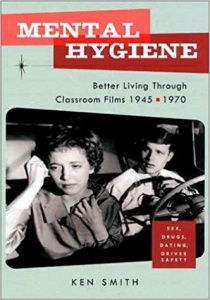Mental Hygiene Films
Listen to the Recess! Clip
| Author | John Cech |
| Air Date | 5/9/2000 |

Mental Hygiene Films Transcript
I remember vividly to this day a spring morning in high school, back in the early 1960s, and being marched into the auditorium to be treated to a film called “Drug Addiction,” about the decline and fall Marty DeMalone, who went from “good guy” to crazed heroine addict in 22 minutes.
It was a ponderous, didactic film, full of cautionary, melodramatic warnings. One can’t imagine teenagers today sitting through it without hooting at the screen. But it was curiously effective then, and, in its own crude way, scary enough to keep most of us on the straight and narrow.
This movie was one of the hundreds of films that were made, from the mid-1940s through the 1960s, by small production companies that specialized in what have been collectively referred to has “Mental Hygiene” movies. In his fascinating book on the subject, Mental Hygiene Classroom Films (from Blast Books) Ken Smith looks at dozens of these films that he found hidden in basements and archives all over country where they had been relegated to the popular culture scrap heap. The films are almost exclusively about proper behavior–like the etiquette lessons of “Dinner Party” and “Exchanging Greetings and Introductions.” There are films about other aspects of social etiquette, like “Dating Do’s and Don’ts” in which we see young Woody secure a successful date from the girl of his dreams, Ann. And there are films about deeper patterns of behavior, like “Developing Your Character,” which is narrated by Ken Nordine. There are the famous safety films, like “Duck and Cover,” and the many driver’s ed films, some of them using scenes from actual traffic accidents; and one of my favorites, with a story line about kids’ horrible accidents that could have come right out of an Edward Gorey spoof of a 19th century cautionary tale–the macabre “Benefits of Looking Ahead.”
These were cheesy movies, but they were also strangely powerful to impressionable minds, that hadn’t yet been saturated and made cynical by the rock and roll, the media, and the cultural revolution. These movies come from that faraway time when there were clear authority figures whose advice was always welcome, a time when dads always wore suits and knew things that teenagers didn’t, like Phil, the teenage hero of “Shy Guy,” discovers when he asks his father how to fit in:
Brief sound clip from “Shy Guy.”